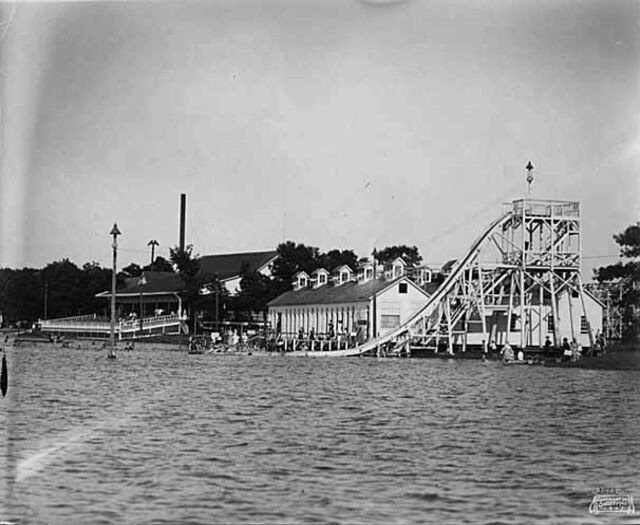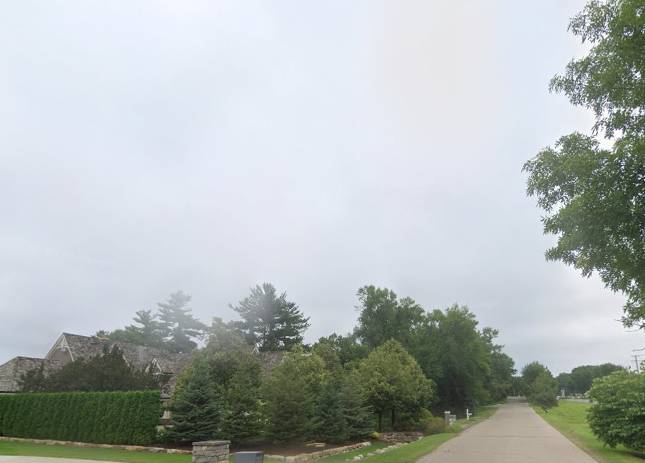The roots of Wildwood trace back to the 1880s, when White Bear Lake began to attract visitors from St. Paul, thanks to new rail connections. By 1883, the First Mahtomedi Assembly had platted the land and built a lakeside tabernacle, drawing summer crowds for religious and recreational events. A small park was created in 1889 by the St. Paul and White Bear Railroad to entice more visitors, but it was short-lived, succumbing to financial troubles and the Depression of the 1890s. In 1898, the Twin City Rapid Transit Company (TCRT) bought the park and transformed it into a full-fledged amusement destination, reopening it as Wildwood Amusement Park.
Accessible by streetcar, Wildwood became a popular destination for city dwellers seeking a fun day on the lake. From Memorial Day to Labor Day, the streetcars ran packed, transporting families and groups from St. Paul to White Bear Lake for just 10 to 15 cents per ride. The 45-minute ride brought them to a park with a blend of traditional amusement attractions, like roller coasters and a Ferris wheel, and lakeside recreation, including fishing boat rentals and toboggan slides that launched swimmers into the lake.
The park’s appeal was amplified by its setting on the shores of White Bear Lake. Guests could picnic in the expansive grounds, take motorboat rides, or try their luck at the penny arcade. The brick dance pavilion, where orchestras led by Fats Waller and Guy Lombardo played, hosted evening events to coincide with the last streetcar back to St. Paul, offering the perfect end to a day at the park. Wildwood operated as a day-trip destination where visitors could enjoy a getaway without leaving the Twin Cities.
Wildwood earned the nickname “the Coney Island of St. Paul,” thanks to its vibrant energy and popularity. The park’s success relied on its ability to serve both individuals and large groups. Company picnics, family reunions, and social gatherings all found a home at Wildwood. Its attractions, from baseball games on the beach to the “Laugh in the Dark” ride, catered to a wide range of tastes, making it a place where memories were made.
However, Wildwood was plagued by financial instability. A 1908 fire destroyed many of its original buildings, further straining its finances. Ownership changed hands multiple times as operators tried to revitalize it with new attractions like a miniature train, the first-ever Tilt-A-Whirl (added in 1927), and a swimming pool. Yet, despite these efforts, the park’s money problems continued.
Two major factors contributed to Wildwood’s decline. First, the rise of the automobile gave people more freedom to travel beyond the reach of streetcar lines, making local parks less appealing. Second, the Great Depression severely limited the discretionary income of families, leading to a drop in attendance. By 1932, Wildwood closed its doors for good, though the dance pavilion remained open sporadically until 1937.
The final blow came in 1938 when the Twin City Rapid Transit Company announced it was abandoning the park. Its remaining buildings were dismantled, and the land was sold and subdivided for development. Though Wildwood was gone, streetcars continued to serve the area until 1951. The memories of the park, however, lived on in the hearts of those who had visited, providing a nostalgic glimpse into a bygone era.
Today, little remains of Wildwood’s once-thriving attractions, but its legacy as a beloved community gathering place endures. A plaque at a small park in Willernie near the former entrance serves as one of the few reminders that for a generation of Minnesotans, Wildwood was more than just an amusement park; it was a symbol of simpler times, a place where families could come together and escape the routine of daily life. While the park may have disappeared, its story is a reminder of how the changing tides of transportation, economy, and leisure shaped the culture of early 20th-century America.
 Minnesota Then
Minnesota Then

